
Safety Instructions 3
Care and Maintenance 3
Using the product with other equipment 3
Troubleshooting 3
Hints and tips 3
Back Belt sling 4
Product Description 4
Intended use 4
General Purpose sling 5
Product Description 5
Intended use 5
Positioning sling 7
Product Description 7
Intended use 7
Important!
The process of lifting and moving a person always involves risks.
Therefore, you must read the user manuals for the lift and the
lifting equipment carefully. Always make sure that the lifting equipment
you are using is intended for use with the lift. As a care provider, you are
responsible for the patient's safety and you must know whether or not the
patient will be able to cope with the lifting process.
The sling must be designed and tested to meet the patient's specific
needs. If you are in any doubt, please contact the supplier. Human Care
constantly improves and updates its products. We reserve the right to
change the design of the products without prior notice.
Important points to remember
• Carry out a careful visual inspection of the sling every time you use it.
• Check that the right sling is being used for the patient. The model, size and
material must meet the patient's needs.
• Plan the moving and lifting process so that it is as safe as possible.
• Check that the sling is correctly attached to the lift once the lifting straps are
stretched.
• Check that the patient is sitting securely in the sling before starting to lift
him/her.
• Check that the lift is in balance when moving, raising and lowering the
patient.
• When moving the patient, it is important not to hold the lift belt, to prevent
it from being damaged.
• The sling must only be used for transfering people. The sling must not be
used as a swing.
• Make sure no sharp objects comes in contact with the sling.
Safety Instructions
Contents
• It is important to always check that the loops are at the bottom of all hooks
(see picture below), securely placed below the locking pin on all hooks.
Correct Correct Incorrect Incorrect
• When using a telescopic hanger bar iIt is important that the hooks are in the
correct position, with the opening of the hook facing upwards on both hooks
(please see picture below). Check the position of the hook once the lift straps
are stretched, but before the patient has left the surface.
Correct Incorrect
Periodic inspection
In some countries a periodic inspection must be carried out at least every
6 months. Please see our periodic inspection log at our website (www.
humancaregroup.com.)
Expected service life
In normal use, the product is expected to have a service life of 1 to 5 years. The
material, the washing process, the frequency of use and the load on the product
all affect its life time.
Recycling
Once the product has reached the end of its life, it must be disposed as
residual waste.
www.humancaregroup.com
2

Positioning Sling
Part #: NSB-400-S
700 LB WEIGHT CAPACITY
LOT#:
WARNING
Read instructions before use.
Inspect sling before each use.
!
MADE IN THE U.S.A.
1-877-822-7866 | www.humancaregroup.com
YEAR
1613 14 15
Product name/
designation
Washing
instructions
Maximum
weight
Part no.
• Check the sling for wear and tear. It is important to check the fabric, the
edging, the seams and the lifting straps.
• Damaged lifting equipment must not be used.
• For washing instructions, please see the sling label.
The sling is designed for use with all Human Care's lifts and hanger bars. Visit
www.humancaregroup.com for information about equipment and products.
Combinations of equipment and products not recommended by Human Care
can put the patient's safety at risk. The use of these combinations is at the user's
own risk and liability.
Care and Maintenance
Using the product with other equipment
Is the patient incorrectly positioned in the sling?
• If the patient is at risk of sliding out, the sling is not correctly fitted.
• If the patient is at risk of sliding out, the sling may be too large.
• If the patient is unbalanced when lifted, the instructions on the individual
test log have not been followed or a new test needs to be carried out.
• If the sling is too small, this can be uncomfortable for the patient. The sling
can cut into the patient's flesh and/or his/her back may not have enough
support.
Note: It is important that the right sling is used for each patient
and that it is individually tested to ensure that it meets the
patient's needs.
Alternative connection method using leg support:
Note: An individual assessment of the patient's needs
must always be carried out before choosing an alternative
connection method.
1. Three point suspension: Attach the leg section lifting straps to the leg hooks
and the back section lifting straps to the lift bar.
2. Two-point suspension with crossed leg support: Thread the strap on one leg
section through the strap on the other leg section before attaching them to
the lift bar.
3. Two-point suspension with overlapping leg support: This method is suitable
for lifting patients with an amputated leg, for example. Extension straps can
be attached to the lifting straps to prevent the patient from leaning too far
back in the sitting position.
4. Two-point suspension with separate leg support: Put the patient's legs in
each leg section and attach the lifting straps to the lift bar. Note: This method
increases the risk of the patient sliding out of the sling.
Troubleshooting
Hints and tips
Label information
The label on the sling contains the following information.
Our slings are designed based on the fact that people are different and that we
all have our own wishes and desires. To make everyone happy and to make all
our clients feel as comfortable as possible sitting in our slings, most of them can
be used with 2, 3 or 4-point suspensions.
2-point suspension
Suitable for most lifting
situations providing a
good seating position.
2-point suspension is
available with fixed and
portable lifts.
3-point suspension
Offers an elongated
sitting position and
more even weight
distribution. The
3-point suspension
is suitable especially
for patients carrying
an increased risk of
pressure sores.
4-point suspension
A spacious sitting
position making it
suitable for larger
patients or when using
a stretcher. 4-point
suspension is available
with both fixed and
portable lifts.
Suspension Alternatives
Accessory Description Part no.
2-point hanger bar The 2-point hanger bar for HeliQ
stationary lift comes in 4 different
widths, 35 cm (13.8”), 45 cm (17.7”),
55 cm (21.7”) and 60 cm (23.6”).
35 cm: 55611
45 cm: 54043
55 cm: 55612
60 cm: 55613
4-point hanger bar 4-point hanger bar for HeliQ
stationary lift.
70800
4-point suspension 4-point suspension accessory (49 cm).
Enables 4-point lifting with the Altair
and Roomer S lifts. The suspension bar
is placed on the lift’s single leg hook.
55619
Hanger Bar Accessories - Human Care Lifts
www.humancaregroup.com
3

Applying the sling from a seated position
1. Stand behind or to the side of the patient
and hold the sling with the anti slip pad
facing the patient’s back. Place the back
band around lower back and bring flaps
forward under arms.
2. Move to the front and fasten the back
band comfortably firm.
3. Bring the sit to stand device to its lowest
position and attach the loop or clip of belt
to the belt hooks. Select loops that are
appropriate to size and seated posture. Be
sure to color-match loops on each side.
4. As you begin lift, check to see that straps
are securely attached and that the patient
gains a firm foothold.
Gait Training
1. Move footplate out of the way to allow
for foot steps.
2. Place belt on patient as shown above and
lift until patient is in upright position.
3. Hold the sit-to-stand lift steady as you
disengage the brakes. Remain standing
either beside or behind the machine and
slow the patient to assume a normal gait.
4. After training complete, return user to
chair, detach back belt and move the lift
away. Remove back belt and replace foot
plate.
Back Belt sling
The Back Belt sling works together with a sit-to-stand device in order to safely raise or lower patients from toilet, bed or chair.
It supports the central section of the back and has soft padding for optimum comfort.
The Back Belt is recommended especially for patients with poor stability finding it difficult to stand.
Product Description
Intended use
* Only distributed in USA
Picture and illustraon above shows
the NSB-500.
Technical specifications
Item Part no. Size Weight Capacity
Back belt 25130-S S 250 kg / 550 lbs
Back belt 25130-M M 250 kg / 550 lbs
Back belt 25130-L L 250 kg / 550 lbs
Back belt 25130-XL XL 250 kg / 550 lbs
Back belt NSB-500-S * S 227 kg / 500 lbs
Back belt NSB-500-M * M 227 kg / 500 lbs
Back belt NSB-500-L * L 227 kg / 500 lbs
Back belt NSB-500-XL * XL 227 kg / 500 lbs
Technical specifications
Item Part no. Size Weight Capacity
Back belt, single patient use NSB-501-S S 250 kg / 550 lbs
Back belt, single patient use NSB-501-M M 250 kg / 550 lbs
Back belt, single patient use NSB-501-L L 250 kg / 550 lbs
Back belt, single patient use - clips NSB-501C-S S 200 kg / 440 lbs
Back belt, single patient use - clips NSB-501C-M M 200 kg / 440 lbs
Back belt, single patient use - clips NSB-501C-L L 200 kg / 440 lbs
Back belt, single patient use - clips NSB-501C-XL XL 200 kg / 440 lbs
www.humancaregroup.com
4

The General purpose sling is available in reusable and single patient use versions with loops and/or clips. This sling allows for easy
seated transfer and has built in flexibility to achieve proper leg and body positioning for patients with some upper body control.
Technical specifications
Item Part no. Material Number
of straps
Size A (mm/
inch)
B (mm/
inch)
C (mm/
inch)
Weight
capacity
General purpose sling
single patient use NSB-105-S Polyester 4 straps S 775 mm /
31”
838 mm /
33”
304 mm /
12” 318 kg/ 700 lbs
General purpose sling
single patient use NSB-105-M Polyester 4 straps M 972 mm /
38”
883 mm /
35”
425 mm /
17” 318 kg/ 700 lbs
General purpose sling
single patient use NSB-105-L Polyester 4 straps L 1143 mm
/ 45”
1029 mm
/ 41”
533 mm /
21” 318 kg/ 700 lbs
General purpose sling
single patient use NSB-105-XL Polyester 4 straps XL 1334 mm
/ 53”
1143 mm
/ 45”
679 mm /
27” 318 kg/ 700 lbs
General purpose sling
reusable NSB-103-S* Polyester net 8 straps S 775 mm /
31”
838 mm /
33”
304 mm /
12” 318 kg/ 700 lbs
General purpose sling
reusable NSB-103-M* Polyester net 8 straps M 972 mm /
38”
883 mm /
35”
425 mm /
17” 318 kg/ 700 lbs
General purpose sling
reusable NSB-103-L* Polyester net 8 straps L 1143 mm
/ 45”
1029 mm
/ 41”
533 mm /
21” 318 kg/ 700 lbs
General purpose sling
reusable NSB-103-XL* Polyester net 8 straps XL 1334 mm
/ 53”
1143 mm
/ 45”
679 mm /
27” 318 kg/ 700 lbs
General purpose sling
reusable bariatric
NSB-109-
2XPH* Polyester net 8 straps Bariatric 775 mm /
31”
838 mm /
33”
304 mm /
12” 454 kg/ 1000 lbs
General purpose sling
single patient use NSB-104-S polymethylpentene 8 straps S 775 mm /
31”
838 mm /
33”
304 mm /
12” 318 kg/ 700 lbs
General purpose sling
single patient use NSB-104-M polymethylpentene 8 straps M 972 mm /
38”
883 mm /
35”
425 mm /
17” 318 kg/ 700 lbs
General purpose sling
single patient use NSB-104-L polymethylpentene 8 straps L 1143 mm
/ 45”
1029 mm
/ 41”
533 mm /
21” 318 kg/ 700 lbs
General purpose sling
single patient use NSB-104-XL polymethylpentene 8 straps XL 1334 mm
/ 53”
1143 mm
/ 45”
679 mm /
27” 318 kg/ 700 lbs
General purpose sling
single patient use with clips NSB-104C-S polymethylpentene 4 straps S 775 mm /
31”
838 mm /
33”
304 mm /
12” 318 kg/ 700 lbs
General purpose sling
single patient use with clips NSB-104C-M polymethylpentene 4 straps M 972 mm /
38”
883 mm /
35”
425 mm /
17” 318 kg/ 700 lbs
General purpose sling
single patient use with clips NSB-104C-L polymethylpentene 4 straps L 1143 mm
/ 45”
1029 mm
/ 41”
533 mm /
21” 318 kg/ 700 lbs
General purpose sling
single patient use with clips NSB-104C-XL polymethylpentene 4 straps XL 1334 mm
/ 53”
1143 mm
/ 45”
679 mm /
27” 318 kg/ 700 lbs
General purpose sling
reusable with clips NSB-103C-S Polyester/cotton 4 straps S 775 mm /
31”
838 mm /
33”
304 mm /
12” 318 kg/ 700 lbs
General purpose sling
reusable with clips NSB-103C-M Polyester/cotton 4 straps M 972 mm /
38”
883 mm /
35”
425 mm /
17” 318 kg/ 700 lbs
General purpose sling
reusable with clips NSB-103C-L Polyester/cotton 4 straps L 1143 mm
/ 45”
1029 mm
/ 41”
533 mm /
21” 318 kg/ 700 lbs
General purpose sling
reusable with clips NSB-103C-XL Polyester/cotton 4 straps XL 1334 mm
/ 53”
1143 mm
/ 45”
679 mm /
27” 318 kg/ 700 lbs
The illustraon shows the
NSB-104C and NSB-103C
The illustraon shows the
NSB-103 and NSB-105
Applying the sling from a seated position (NSB-103 used as
reference)
1. Stand behind or to the side of the patient and hold the sling with label
facing up and away. Work the sling down the back, the bottom edge should
be placed behind the patient´s coccyx.
General Purpose sling
Product Description
* Only distributed in USA
Intended use
2. Pull the leg sections through to the front. Raise each leg and pull the leg
sections under patient´s legs.
The picture shows the NSB-103
www.humancaregroup.com
5

3. Lower the hanger bar and securely attach straps (please see page 2). There
are different ways to attach the loops to a hanger bar and to position the legs.
This sling can be used both with 2-, 3- or 4-point hanger bars. The image above
shows attachment to a 4-point hanger bar with legs in a divided position.
Please see chapter “positioning the legs” to the right for the different options
when using a 4-point hanger bar. For attachment of this sling to a 2-point or
a 4-point hanger bar, please see chapter “attaching sling to hanger bars” to
the right.
4. Continue lifting the patient. It is a good idea to put your arm around the
patient while you are moving him/her to create a greater sense of security.
Applying the sling from a lying position (NSB-103 used as
reference)
1. Stand to side and turn the patient to face you. Place gathered sling behind
back with label facing up and away.
2. Turn the patient on back and pull gathered sling towards you.
3. Bring the leg sections underneath the thighs to achieve the desired
positioning of the legs.
4. Lower the hanger bar and securely attach straps (see page 2) with
appropriate loop.
For sling with clips: Attach the leg section lifting clips to the lifting frame. Turn
the lift around and attach the back section lifting clips to the lift frame.
Positioning the legs (4-point hanger bar)
To achieve the open position, bring
the leg sections up between the
thighs and attach the leg straps to
the hanger bar.
To achieve the divided position, bring
the leg sections up between the
thighs, thread one leg strap through
the bottom opening of other (left)
and attach the leg straps to the
hanger bar cross over style.
For a more relaxed position,
attached to the center hook of the
hanger bar.
To achieve the closed position,
pull one leg band than the other
underneath both thighs and attach to
the hanger bar.
2-point hanger bar 3-point hanger bar 4-point hanger bar
Sling with 8 straps:
Starting from head, the
3 top straps on the left
attached on left side,
repeat on the right side.
The 2 leg straps should
be attached to the hook
on each side.
Sling with 8 straps:
Starting from head,
the 3 top straps on the
left - attach on left side,
repeat on right side, the
2 leg straps (right and
left) - attach to the leg
hook.
Sling with 8 straps:
Each hook should have
2 straps attached. The
bottom 2 leg straps
can be crossed for
increased comfort.
Sling with 4 straps:
Starting from head,
the 1 top strap on the
left attach on left side,
repeat on right side(1),
The 2 leg straps should
be attached to the hook
on each side.
Sling with 4 straps:
Starting from head,
the 1 top strap on the
left - attach on left side,
repeat on right side(1).
The 2 leg straps (right
and left) attach to leg
hook.
Sling with 4 straps:
Each hook should have
1 straps attached. The
bottom 2 leg straps
can be crossed for
increased comfort.
Attaching the General purpose sling to hanger bars
To achieve the upright position,
use the short loops of the head and
shoulders and the long loops of leg
straps.
To achieve the reclined position, use
the middle or long loops of the head
and shoulders straps and the middle or
short loops of leg straps.
Positioning the body
NOTE: Always color-match loops of each pair of straps to achieve level loading.
www.humancaregroup.com
6

The Positioning Sling is a sling that can be used for turning or repositioning a patient in bed. The sling allows caregivers to
reposition patients up in bed, side to side turning, lateral transfers from bed to stretcher or bed to bed.
The Positioning Sling is available in different models. Please see specifications below.
Technical specifications
Item Part no. Number
of straps
Material Width Lenght Weight capacity
Standard reusable* NSB-400-S 10 straps Polyester 1041 mm/41” 1702 mm / 67” 318 kg/700 lbs
Standard reusable bariatric* NSB-409-S 10 straps Polyester 1829 mm / 72” 2235 mm / 88” 454 kg / 1000 lbs
Standard reusable breathable NSB-401-S 8 straps Polyester 1041 mm/41” 1702 mm / 67” 318 kg/700 lbs
Standard single patient use* NSB-451-U 8 straps Polyester/cotton 1041 mm/41” 1702 mm / 67” 318 kg/ 700 lbs
Standard, reusable ventilated NSB-401-ST 8 straps polyester/nonwoven 1065 mm/42” 1980 mm / 78” 454 kg/1000 lbs
Bariatric positioning sling
ventilated L NSB-410-ST-L 8 straps polyester/nonvowen 1320mm/52!” 2080mm/82” 454 kg / 1000 lbs
Bariatric positioning sling
ventilated XL NSB-410-ST-XL 8 straps polyester/nonvowen 1470 mm/58” 2080mm/82” 454 kg / 1000 lbs
Bariatric* NSB-408 10 straps Polyester/woven 1372 mm/54” 2235 mm / 88” 454 kg / 1000 lbs
Posioning Sling
Product Description
Intended use
Applying the sling from a lying position (NSB-401-S used as
reference)
1. Stand on the side of the bed and turn
the paent to face you. Place gathered
sling behind back with label facing up
towards head and away.
2. Turn the paent on back and pull
gathered sling towards you.
3. Lower the hanger bar and posion
it with the longest length head to toe
(not across shoulders). Make sure that
paent head is supported.
How to aach the straps: (aach the
straps securely according to page 2)
2-point hanger bar(picture 1): Starng
from head, the top 2 straps from le and
right (4 total) aach to hook closest to
head, boom 2 straps from le and right
(4 total) aach to hook closest to feet.
3-point hanger bar: Use only the 2
hanger bar hooks (not the leg hook), at-
tach the straps according to the 2-point
instrucon or use the accessory “4-sus-
pension”, aach the straps according to
the 4-point instrucon.
4 point hanger bar(picture 2): Start
from the head end, each hook should
have 2 straps on it.
NOTE- some versions of the positioning sling
has 5 straps on each side. In this case it is
recommended for the middle straps to be
attached to hook that the head straps are
attached to.
Picture 1.
Picture 2
* Only distributed in USA
The illustraon shows the NSB-400-S
The picture shows the NSB-401-S
head straps
Foot straps
www.humancaregroup.com
7

Transferring in seated position (Can ONLY be done when using
a 4-point hanger bar), (NSB-401-S used as reference):
1. Aer sling has been applied in lying
posion, put paent into a seated posi-
on by adjusng bed. Lower hanger bar
and posion so longest width is across
shoulders.
2. To achieve a seated posion, head
and boom straps must be criss-
crossed on hanger bar.
Aach head straps to bar loops furthest
from paent and foot straps to loops
closest to paent like in this picture.
As li ensure straps are secure (see
page 2) and clear of paent head.
Maintain hand on paent for safety and
guide into slightly reclined chair. (This
is not recommended for transfer to a
wheelchair.)
Transferring in a lying position.
1. Aer sling has been applied in lying
posion (follow the steps 1-3)
2. Begin to li the paent up, pause and
ensure that the straps are secure and
clear of paent head.
Li paent up o bed to another bed,
stretcher or reclined conversion chair.
HUMAN CARE SWEDEN (HQ)
Årstaängsvägen 21B
117 43 Stockholm
Phone:- +46 8 665 35 00
Fax:- +46 8 665 35 10
E-post: inf[email protected]om
www.humancare.se
HUMAN CARE CANADA
10-155 Colonnade Road
Oawa, ON K2E 7K1
Phone:- 613.723.6734
Fax:- 613.723.1058
Email: info.ca@humancaregroup.com
www.humancaregroup.com
HUMAN CARE NETHERLANDS
Elspeterweg 124
8076 PA Vierhouten
Phone: +31 577 412 171
Fax: +31 577 412 170
info.nl@humancaregroup.com
99537 -User manual-positioning sling-general purpose-back belt-Rev07 (2018-11-14)
HUMAN CARE UNITED STATES
8006 Cameron Street, Suite K
Ausn, TX 78754 USA
Phone: 512.476.7199
Fax: 512.476.7190
Email: info.us@humancaregroup.com
www.humancaregroup.com
HUMAN CARE AUSTRALIA
Unit 4, 49 Bere Street
Port Melbourne, VIC 3207
Phone : +61 1300 132 736
Fax : + 61 (03) 9645 4954
Email: info.au@humancaregroup.com
www.humancaregroup.com
-
 1
1
-
 2
2
-
 3
3
-
 4
4
-
 5
5
-
 6
6
-
 7
7
-
 8
8
Human Care NSB-409-S User manual
- Type
- User manual
- This manual is also suitable for
Ask a question and I''ll find the answer in the document
Finding information in a document is now easier with AI
Related papers
-
Human Care General Purpose Sling User manual
-
Human Care NSB-103 General Purpose Sling User manual
-
Human Care 99512 General Purpose Sling User guide
-
Human Care 99532 User manual
-
Human Care Positioning Sling User manual
-
Human Care NSB-103-XL Quick Reference Manual
-
Human Care 25015 User manual
-
Human Care 25060 User guide
-
Human Care 25015 Quick Reference Manual
-
Human Care 25010 User manual
Other documents
-
Joerns Hoyer® Classic Slings Owner's manual
-
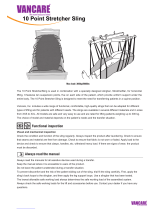 Vancare 10 Point StretcherSling User manual
Vancare 10 Point StretcherSling User manual
-
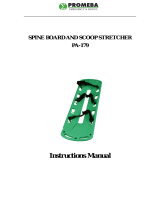 PROMEBA PA-179 Owner's manual
PROMEBA PA-179 Owner's manual
-
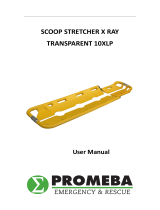 PROMEBA 10XLP Owner's manual
PROMEBA 10XLP Owner's manual
-
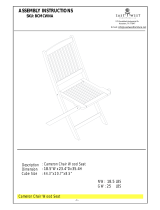 East West Furniture BCMCWNA Assembly Instructions
East West Furniture BCMCWNA Assembly Instructions
-
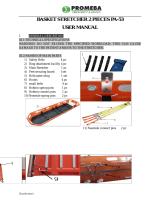 PROMEBA PA-53 Owner's manual
PROMEBA PA-53 Owner's manual
-
Barton RCL-4500 Specification
-
 Microgate optogate User manual
Microgate optogate User manual
-
Invacare Jasmine User manual
-
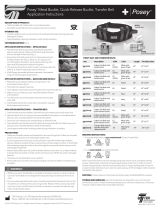 Posey 6556 Operating instructions
Posey 6556 Operating instructions















